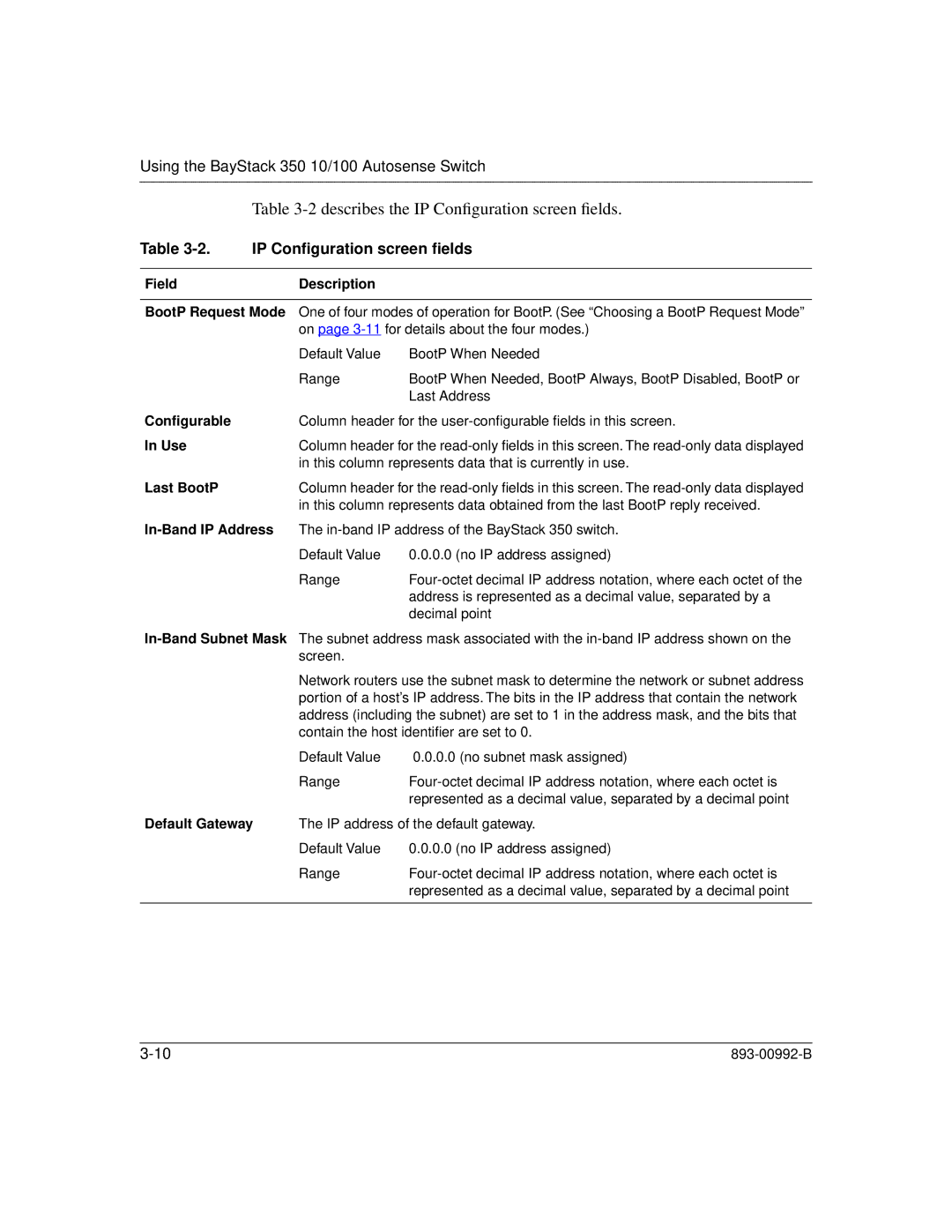
Using the BayStack 350 10/100 Autosense Switch
Table 3-2 describes the IP Configuration screen fields.
Table 3-2. IP Configuration screen fields
Field | Description |
|
|
| |
BootP Request Mode | One of four modes of operation for BootP. (See “Choosing a BootP Request Mode” | |
| on page | |
| Default Value | BootP When Needed |
| Range | BootP When Needed, BootP Always, BootP Disabled, BootP or |
|
| Last Address |
Configurable | Column header for the | |
In Use | Column header for the | |
| in this column represents data that is currently in use. | |
Last BootP | Column header for the | |
| in this column represents data obtained from the last BootP reply received. | |
| The | |
| Default Value | 0.0.0.0 (no IP address assigned) |
| Range | |
|
| address is represented as a decimal value, separated by a |
|
| decimal point |
| The subnet address mask associated with the | |
| screen. |
|
| Network routers use the subnet mask to determine the network or subnet address | |
| portion of a host’s IP address. The bits in the IP address that contain the network | |
| address (including the subnet) are set to 1 in the address mask, and the bits that | |
| contain the host identifier are set to 0. | |
| Default Value | 0.0.0.0 (no subnet mask assigned) |
| Range | |
|
| represented as a decimal value, separated by a decimal point |
Default Gateway | The IP address of the default gateway. | |
| Default Value | 0.0.0.0 (no IP address assigned) |
| Range | |
|
| represented as a decimal value, separated by a decimal point |
|
|
|
